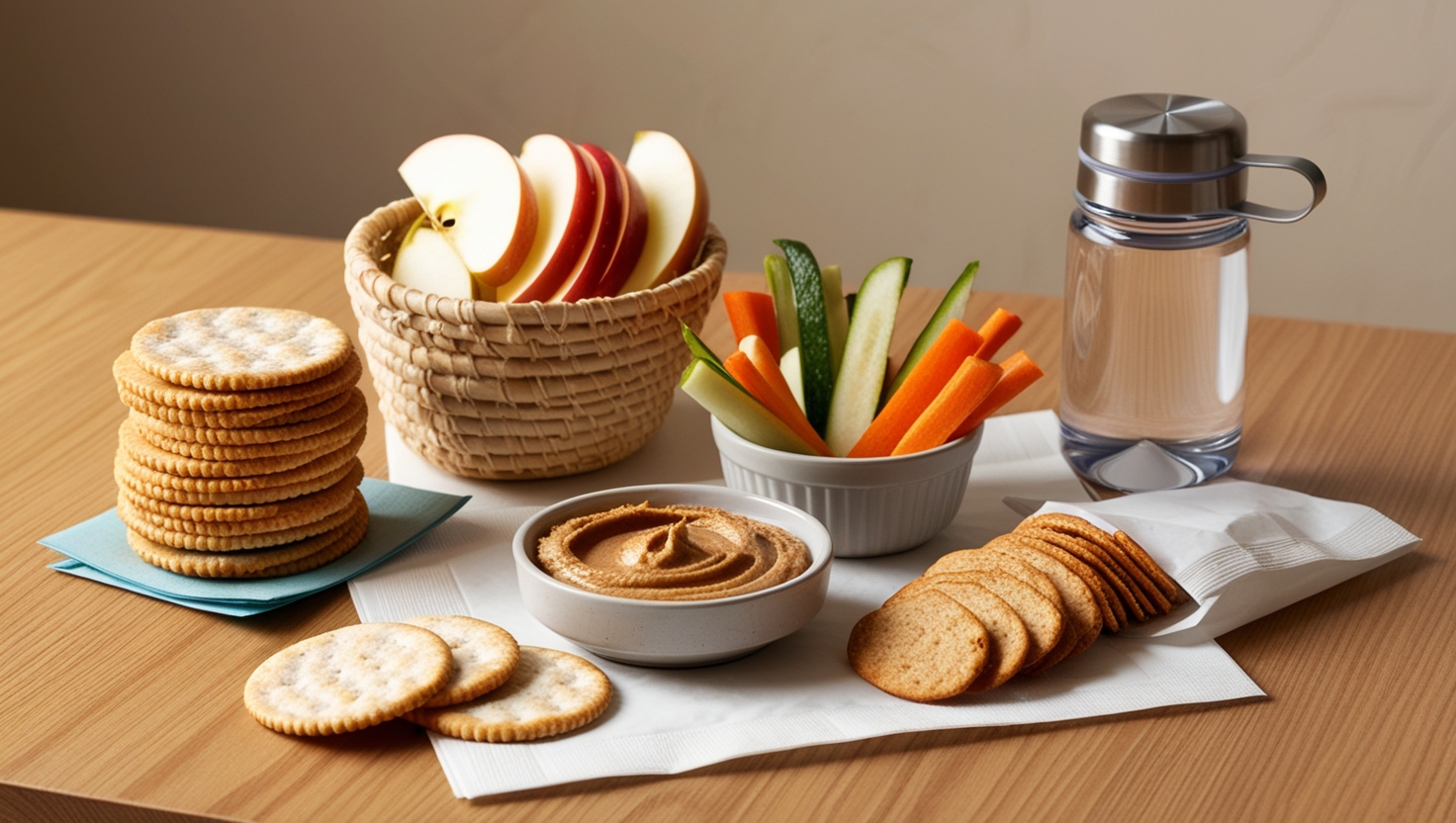Blog
How to Choose Healthier Snacks for Your Child’s School Day

Snacking plays an important role in a child’s daily routine, particularly during school hours when sustained energy and focus are essential.
The right snacks can boost concentration, keep energy levels stable, and supply important nutrients that growing bodies need. However, with so many prepackaged and processed options on the market, finding truly healthy snacks can be confusing.
In this guide, we’ll walk you through five simple and practical tips to help you confidently select nutritious, delicious school snacks that will fuel your child’s body and brain throughout the day.
1. Choose Whole Foods Over Processed Snacks
One of the simplest ways to provide healthier snacks for your child is by focusing on whole foods rather than processed ones.
Whole foods are packed with natural nutrients like fiber, vitamins, minerals, and antioxidants that support a child’s overall health, from building strong bones to maintaining a healthy immune system.
Processed snacks, in contrast, often come loaded with added sugars, unhealthy fats, artificial flavors, and preservatives that offer little nutritional value and may contribute to weight gain, energy crashes, and poor focus.
Healthy Whole Food Snack Ideas:
- Fruits: Apples, bananas, pears, and berries are portable, easy to pack, and rich in natural sugars that offer quick energy alongside important fiber.
- Vegetables: Sliced carrots, cucumber sticks, cherry tomatoes, and bell pepper strips add crunch, hydration, and a wide range of vitamins.
- Nuts and Seeds: Almonds, walnuts, sunflower seeds, and pumpkin seeds provide healthy fats, protein, and important minerals like magnesium.
- Whole-Grain Crackers: Choose minimally processed crackers made from whole grains to give your child fiber and sustained energy.
Tip: Preparing snacks at home using whole ingredients helps you avoid hidden additives and ensures your child gets the best possible nutrition.
2. Avoid Sugary Snacks
Many popular snack products marketed to kids are high in added sugars, which may cause sharp spikes—and subsequent crashes—in blood sugar levels.
These fluctuations can make it harder for children to concentrate in class, impact their mood, and even lead to cravings for more unhealthy foods later in the day.
Choosing snacks low in added sugars helps maintain consistent energy and supports better behavior and learning outcomes.
Healthy Snack Alternatives:
- Yogurt with No Added Sugar: Choose plain Greek yogurt and add your own natural sweetness with fresh fruit or a small drizzle of raw honey.
- Fruit-Based Snacks: Unsweetened dried fruits like raisins, apricots, or apple chips offer a naturally sweet and satisfying option without the processed sugar.
- Whole Grains: Pick whole grain snacks like low-sugar granola bars or air-popped popcorn seasoned with herbs rather than sugary coatings.
Tip: Always check the nutrition label—some snacks labeled as “natural” or “organic” can still contain high amounts of added sugars.
3. Incorporate Protein-Rich Snacks
Including protein in school snacks helps children feel fuller longer, reducing the temptation to reach for less healthy options.
Protein supports muscle growth, tissue repair, immune function, and also contributes to steady blood sugar levels—essential for keeping kids focused and energized through afternoon classes.
Protein-Rich Snack Ideas:
- Boiled Eggs: Easy to prepare and packed with high-quality protein, boiled eggs are a nutrient-dense snack that’s perfect for lunchboxes.
- Cheese Sticks: Low-fat string cheese or mini cheese blocks are a fun, tasty way to add both protein and calcium to your child’s diet.
- Nut Butter: Spread peanut butter, almond butter, or cashew butter onto whole-grain crackers, banana slices, or apple wedges for a filling snack.
- Hummus and Veggies: Hummus, made from chickpeas, is an excellent plant-based protein source and pairs well with crunchy veggies like cucumbers, bell peppers, or carrots.
Tip: Combining a protein source with a little healthy fat or fiber (like in apples with peanut butter) makes for a perfectly balanced snack that keeps hunger at bay.
4. Include Healthy Fats
Healthy fats are crucial for brain development, energy, and overall cellular health, especially during the formative school years.
Incorporating good fats into your child’s snacks not only keeps them satisfied longer but also supports concentration, memory, and emotional stability—important factors for academic success.
Healthy Fat Snack Ideas:
- Avocado: Smash avocado onto whole-grain toast or pack it as a dip with vegetable sticks for a creamy, nutrient-dense snack.
- Nuts and Nut Butters: Almonds, cashews, peanuts, and spreads made from these nuts provide essential fatty acids that aid brain function.
- Trail Mix: Create a custom trail mix using a blend of unsweetened dried fruits, raw nuts, and seeds for a hearty, energy-boosting treat.
Tip: Teach your kids that fats aren’t “bad”—it’s about choosing the right kinds of fats that nourish their bodies and brains.
5. Make Snacks Fun and Interactive
Kids are naturally more enthusiastic about food when they can interact with it or help create it.
Making snacks fun not only encourages healthier eating habits but also gives children a sense of independence and pride in their food choices.
Creative Snack Ideas:
- Snack Kabobs: Thread fruits, cheese cubes, and whole-grain crackers onto small skewers for colorful, easy-to-eat kabobs.
- DIY Trail Mix: Set up a “trail mix bar” at home where kids can mix their favorite nuts, seeds, and dried fruits into their own custom snack bags.
- Veggie Faces: Use sliced cucumbers, cherry tomatoes, shredded carrots, and hummus to create fun faces or designs on whole-grain crackers or plates.
Tip: Letting kids participate in snack prep not only makes healthy eating more exciting but also builds important life skills like creativity and nutrition awareness.
Choosing the right snacks for school is a key factor in supporting your child’s physical health, emotional well-being, and academic success.
By focusing on whole foods, avoiding sugary options, incorporating protein and healthy fats, and making snack time fun and engaging, you can build a snack routine that nourishes your child inside and out.
Experiment with these tips, and you’ll find it easy to pack school snacks that both you and your kids feel great about!










